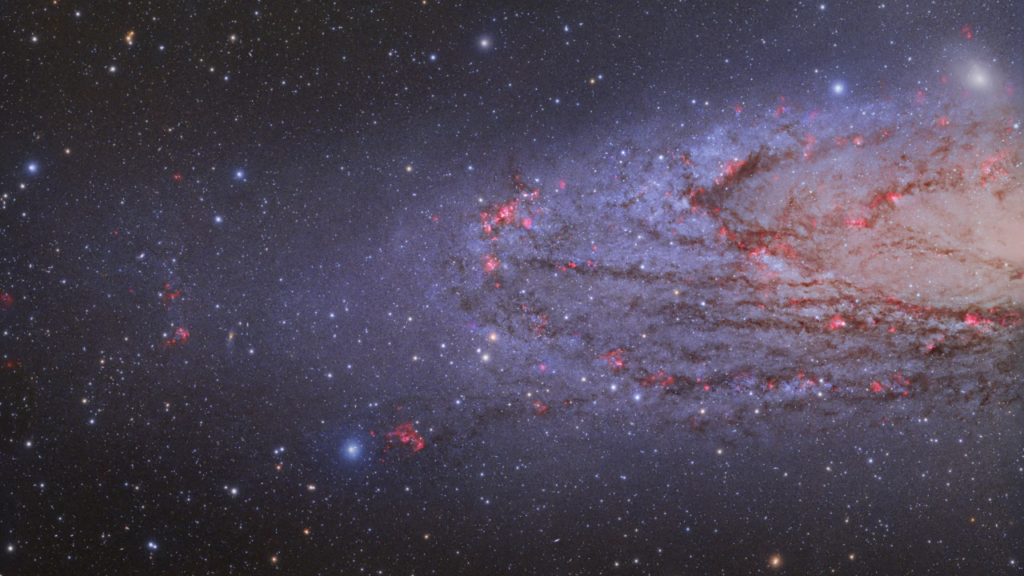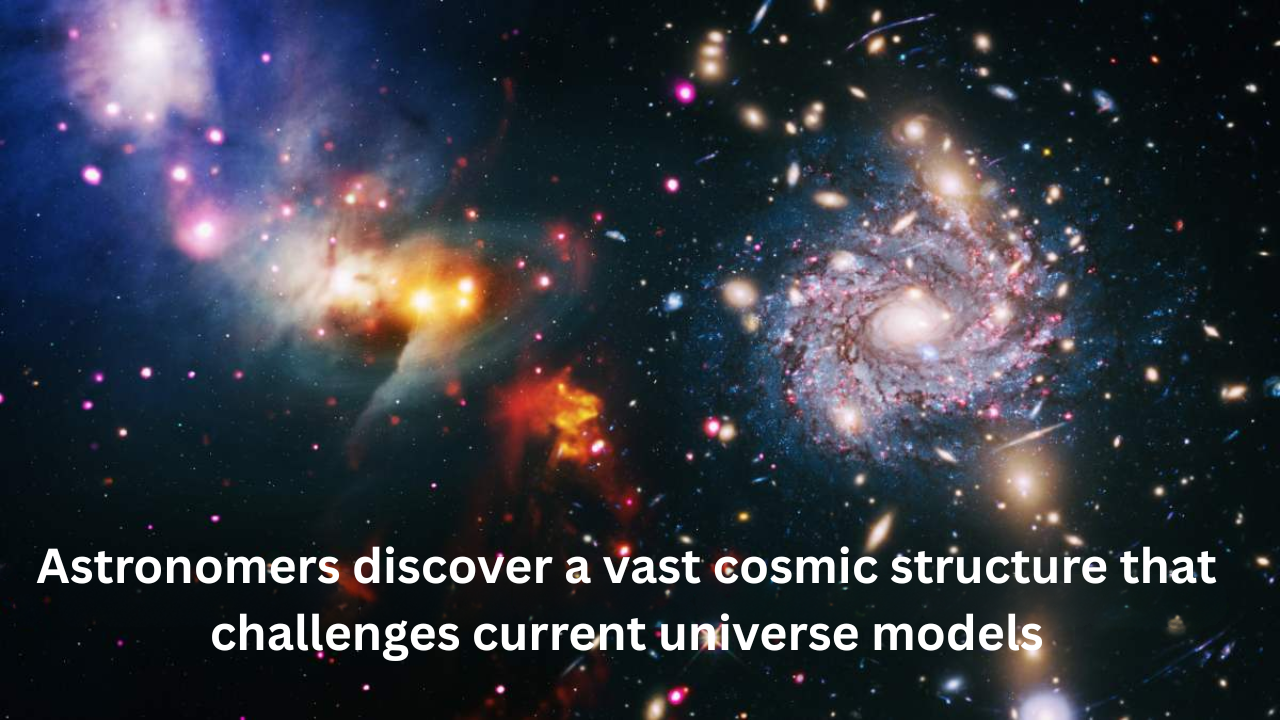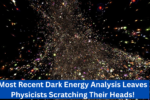In a series of astonishing discoveries, astronomers have identified enormous structures in the universe that are so vast, they defy the long-standing cosmological principle the idea that the universe is homogeneous and isotropic when viewed on a large enough scale. These findings are not only expanding our cosmic map but also challenging the foundational theories of modern cosmology.
The Big Ring: A Celestial Mystery
Earlier this year, a team led by Alexia Lopez, a PhD candidate at the University of Central Lancashire, discovered a massive structure dubbed the “Big Ring.” Located in the direction of the Boötes constellation, this ring-like formation stretches an estimated 1.3 billion light-years in diameter roughly 10,000 times the size of the Milky Way galaxy.
The Big Ring appears to form a near-perfect loop of galaxies and galaxy clusters located approximately 9.2 billion light-years away. What’s baffling scientists is its symmetry and scale, which are hard to reconcile with current models of how the universe evolved.
It’s not just the size of the Big Ring that’s surprising,” Lopez said during a Royal Astronomical Society presentation. It’s the very fact that it forms a coherent, circular structure that contradicts what we expect at these scales.
The Giant Arc: A Precursor to Cosmic Anomalies
The Big Ring wasn’t the first time Lopez and her team stumbled upon a cosmic enigma. In 2021, they discovered the Giant Arc a sprawling structure over 3.3 billion light-years long, also located in the Boötes constellation.
Made up of galaxies, clusters, gas, and dust, the Giant Arc stretches across a significant portion of the sky and further undermines the cosmological principle. That principle, a bedrock of modern cosmology, asserts that the universe should look the same in every direction and be evenly distributed when observed on a sufficiently large scale typically beyond 1.2 billion light-years.
Quipu: The Largest Structure Yet
Just when astronomers thought they’d reached the limit of cosmic proportions, the discovery of “Quipu” in early 2025 pushed the boundaries even further. Named after the Incan system of knot-records, Quipu is now considered the largest known structure in the universe, spanning 1.4 billion light-years and housing around 68 galaxy clusters.
The structure was identified using data from Germany’s ROAST (Radio Optical and Space Telescope) mission. It dwarfs the previously largest structure, the Sloan Great Wall, which spans about 1.37 billion light-years.
While not a perfect geometric shape like the Big Ring, Quipu’s sheer mass and complexity deepen the mystery of how such cosmic web-like structures form and persist.

Why These Discoveries Matter
These mega-structures don’t just challenge our perception of scale they challenge the theoretical framework of cosmology itself. The cosmological principle, deeply embedded in the ΛCDM model (Lambda Cold Dark Matter), underpins everything from simulations of cosmic evolution to our understanding of dark matter and dark energy.
If these structures truly exist and are not mere statistical flukes, scientists may need to adjust the assumptions that govern everything from the Big Bang to galaxy formation.
According to the European Space Agency (ESA), whose Euclid space telescope was launched in 2023 to map the geometry of the dark universe, these discoveries could influence future models of cosmic expansion and structure formation.
The Search Continues
These findings have ignited a wave of interest in ultra-large scale cosmic mapping. Projects like ESA’s Euclid, NASA’s Nancy Grace Roman Space Telescope, and the Square Kilometre Array (SKA) project jointly developed by agencies including NASA, ESA, and Australia’s CSIRO — are expected to play a crucial role in validating and expanding our understanding of such structures.
For now, the astronomical community remains cautiously optimistic. While it’s possible that some of these observations may be due to projection effects or sample biases, the repeating pattern of massive discoveries suggests something deeper may be at play.
Conclusion
The Big Ring, Giant Arc, and Quipu are reshaping the frontier of cosmology. Their very existence hints at a universe more complex and structured than previously imagined one that may eventually require a rethinking of the standard model of cosmology.
As new data pours in from next-generation space telescopes and global collaborations, scientists hope to unravel whether these immense structures are outliers or the first signs of a larger cosmic truth.

Pankaj Kumar is a skilled content writer at OTE News, focusing on breaking news, technology, and socio-political developments. With a background in Mass Communication, he brings a balanced perspective to his articles, ensuring clarity and reliability. Pankaj has a knack for simplifying complex topics for readers.
In his free time, he enjoys photography, traveling, and experimenting with new cuisines. His curiosity and dedication to truthful reporting make him a valuable contributor to OTE News.




